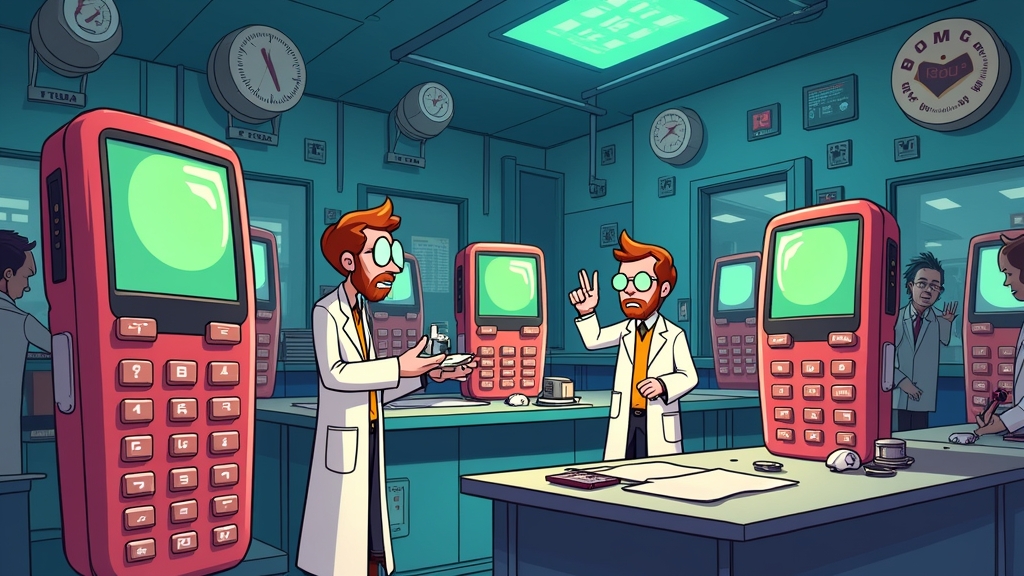AREA WOMAN INVENTS “COMMUNITY LEARNING,” FINALLY DISCOVERS WHAT LIBRARIES HAVE BEEN DOING FOR 3,000 YEARS
MIT PhD Student Designs Revolutionary “People Talking to People” Technology; Silicon Valley Investors Throw $400 Million at Concept
BY HARLAND PURDLESTON, EDUCATION CORRESPONDENT WHO DEFINITELY DIDN’T JUST DRINK FOUR RED BULLS
In a breakthrough that has education experts saying “isn’t this just learning?” MIT doctoral student Caitlin Morris has invented what may be the most disruptive technology since the wheel: people interacting with other people to learn sh*t.
GROUNDBREAKING RESEARCH REVEALS HUMANS ENJOY HUMAN CONTACT
Morris, who grew up in rural New York making things with her hands like some kind of primitive cave-person, apparently had an epiphany that learning might involve actual human interaction. She calls this revolutionary concept “social magic,” though 99.7% of educators call it “literally just how education has always worked.”
“What I’ve discovered,” Morris explained in an exclusive interview, “is that when people talk to other people, they sometimes learn things. I’m hoping to get at least seven research papers and a TED Talk out of this insight.”
EXPERTS WEIGH IN ON OBVIOUS CONCLUSION
Dr. No F@#king Kidding, Professor of Duh Studies at the University of Common Sense, praised the research. “What’s truly incredible about Morris’s work is that she’s managed to secure funding to study something humans have known since we were painting buffaloes on cave walls. Next she’ll discover that food tastes better when you’re hungry and water is wet.”
THE MIT DIFFERENCE: MAKING SIMPLE CONCEPTS NEEDLESSLY COMPLICATED
Morris plans to develop an AI-assisted platform that will help replicate the experience of talking to other human beings, a process previously achieved by simply talking to other human beings.
“We’re going to build a digital simulation of human interaction,” Morris said, “because apparently meeting people in person or just calling them on the phone is too d@mn complicated.”
SILICON VALLEY INVESTORS SCRAMBLE TO THROW MONEY AT BASIC HUMAN BEHAVIOR
The concept has already attracted $425 million in venture capital funding, despite being essentially a description of a community center with WiFi.
“This is the most innovative thing I’ve seen since someone explained to me what a park bench is,” said venture capitalist Chad Moneybags. “We’re projecting a $10 billion valuation by next Tuesday.”
LOCAL LIBRARY RESPONDS
When reached for comment, Barbara Bookman, head librarian at the Cambridge Public Library, sighed deeply and stared into the middle distance for approximately 47 seconds.
“We’ve been facilitating community learning for 150 years,” Bookman whispered, before taking a long sip from a flask hidden in her desk drawer. “But sure, let’s pretend this is new because it has an app and some buzzwords.”
MORRIS’S OTHER INNOVATIONS INCLUDE “WALKING” AND “EATING WHEN HUNGRY”
Morris has also created art installations that help people experience aspects of nature, for those unfamiliar with the concept of “going outside.”
Her doctoral work now focuses on determining which elements of human interaction cannot be replaced by artificial intelligence, a question that would be unnecessary if we hadn’t spent the last decade trying to replace all human interaction with artificial intelligence.
STUDY CONCLUDES: LEARNING BETTER WHEN NOT SOUL-CRUSHINGLY LONELY
Early research results indicate that people learn better when they don’t feel like isolated flesh-bags staring at screens in existential despair, a finding that shocked absolutely nobody except tech executives.
When asked about future applications, Morris said she hopes to leverage her groundbreaking “humans talking to humans” technology to solve complex problems like climate change, poverty, and why anyone would pay $8 for avocado toast when you could make it at home for $1.37.
At press time, Morris was applying for additional funding to study her next revolutionary concept: “Making Things With Your Hands,” a practice that anthropologists believe may date back to the Paleolithic era, or roughly 2.5 million years before TikTok.





